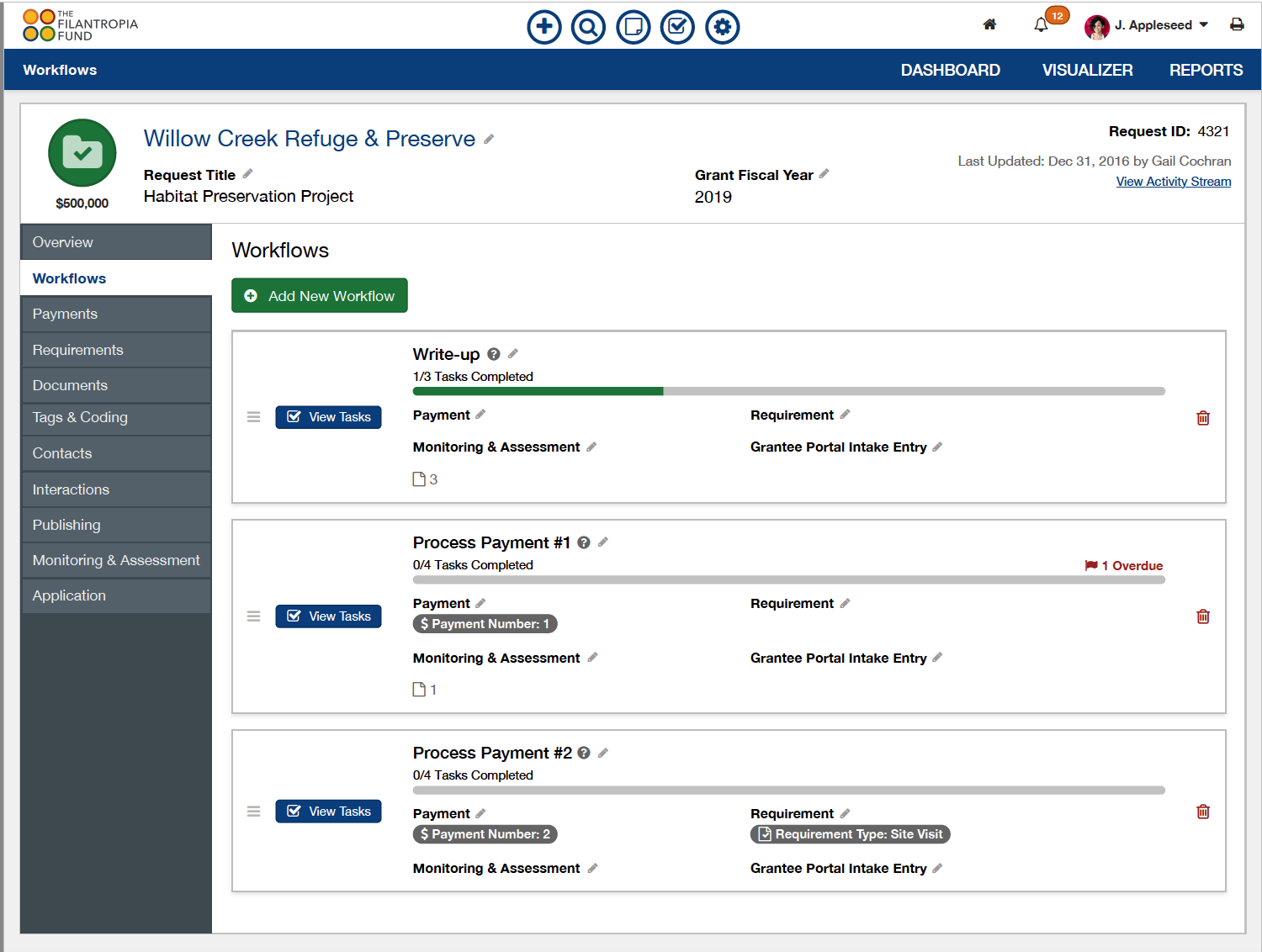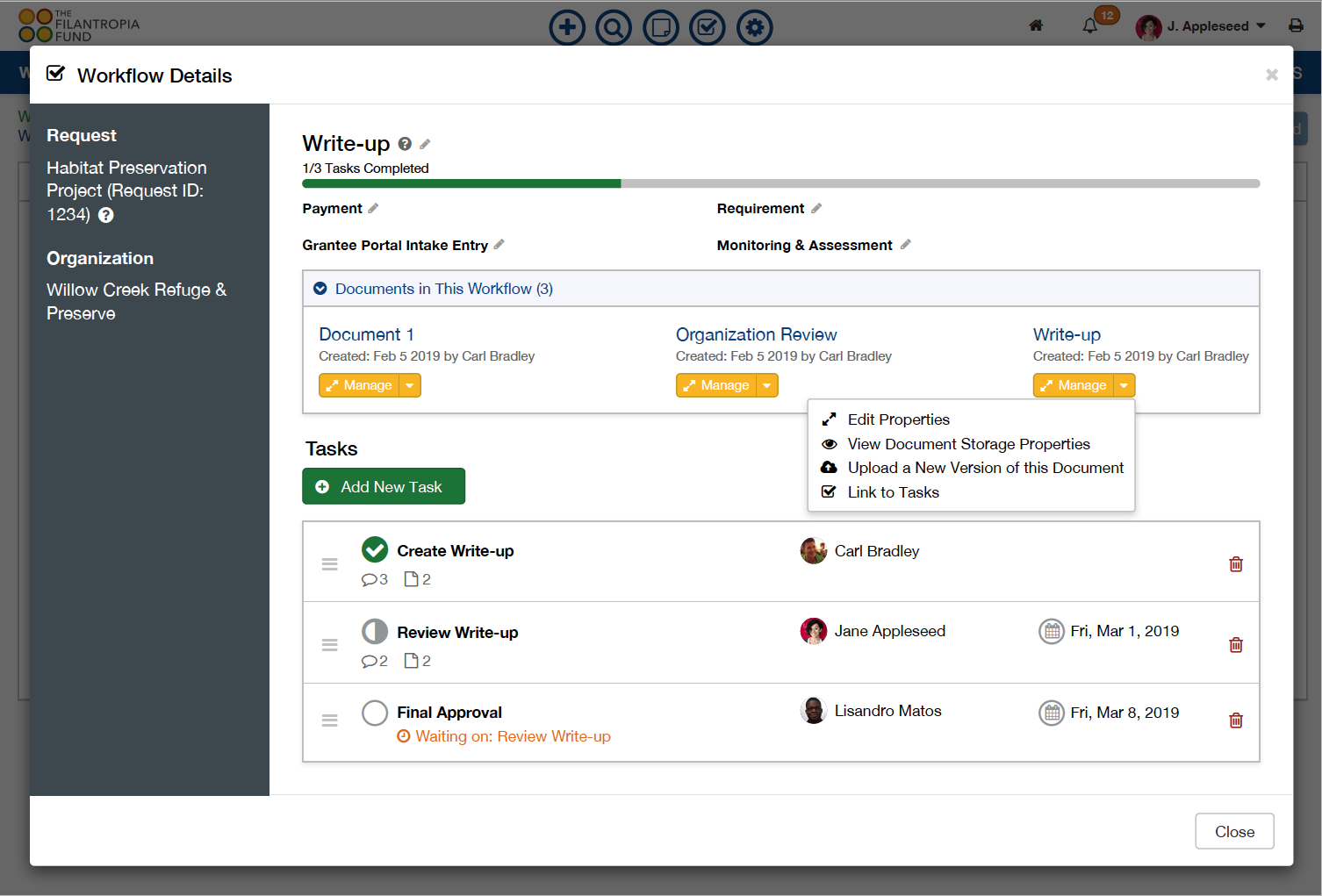
Workflows in GivingData are one way to manage your grantmaking process and facilitate repeatable series of tasks. They are especially useful for tasks that involve more than one person or team, or complex processes that need to be tracked. Workflows keep everyone on the same page and provide transparency into the process.
GivingData enables you to create and manage workflows for Request, Payment, and Requirement records, as well as Grantee Portal Intake Entries, Grant Amendments, and Monitoring & Assessment groups. The platform offers numerous options for creating workflows using templates, including default settings and automation.
Whether you’re new to workflows or a pro, here are a few best practices to help ensure you're optimizing your use of GivingData.
Map your process
Start by documenting the life of a grant in your organization as it moves from a new idea through the approval (or declination) process to being closed at the end of its term. You can use one of many methods to do your mapping. Depending on your process, an interview matrix and gap analysis could work well. Create a workflow or swim lane diagram, list process steps in bullet points, create a sticky note chart. There's no hard rule – use any tool you find useful. Once you document the way work flows through your organization, you can create workflow templates that support and reinforce the process.
Look for pain points
Mapping your process is also a wonderful opportunity to reflect and identify areas for improvement. Pay close attention to any point in the workflow where information starts moving back to people who have already worked on it. For example, is there a reason the same people are touching things multiple times? Listen to areas of frustration and any point where someone can state a process but not the reason for it. In short, “I was just trained to do it that way, so I do" isn't a necessarily a sufficient reason to perpetuate a process.

Build workflows in discrete segments
Rather than have a single workflow that documents the end-to-end process for a record type, consider breaking the process into natural segments. For example, for a simple process related to a request record, you might have three workflows: Request Preparation (covering everything from scenario planning to finalizing a board book), Approval (covering all tasks once it is approved), and Declination (covering all tasks for a grant that is declined). Related workflows such as organization due diligence and payment or reporting processes can then spoke off of these.
Start simple
Identify a process you feel comfortable with and build it in the system. Workflows aren’t set in stone, so you don’t have to wait until you perfect one to add It to the system.
Use clear, action-oriented language
For workflows and tasks, give them a name that would be understandable to anyone within your organization. This is all the more essential if your goal is to have many people across the organization use GivingData.
Save the details for the description
Keep the names short and add information on what is covered in the workflow or how to complete the task in the description.
Automate
Work smarter not harder. As often as it makes sense for your organization, save your future self some clicks and utilize the automation options in GivingData. You can use automation to add a workflow to a record, to designate assignees in the template, and to set due dates based on select criteria.

Customize notifications
Utilize the in-system notifications to keep you and your team on task. Create a list of recommended notifications based on function or role.
Train and support
Provide documentation, training, and ongoing support as teams adopt workflows to encourage adoption and reinforce the process. This is never a one and done undertaking. Make sure everyone on the team has the support and training they need to feel comfortable with GivingData.
Refine as you go
Gather feedback and iterate. You’ll learn and refine as you go.
We hope some of these recommended practices help you as you think about how to adopt workflows or refine their use. We'd love to hear how workflows are working for you, and what best practices you've established. If we missed something, or if you have questions, please reach out to us.
Mary Kadzielski is a consultant at Philanthropy.io, where she delights in helping organizations be more effective and efficient. She supports foundations in their efforts to adopt new technologies, streamline processes, test new software, develop documentation, and plan for business continuity. Her favorite GivingData feature is Grantee 360.
Sign up for the GivingData Insights Newsletter
Receive actionable insights to streamline your grantmaking processes straight to your inbox.

